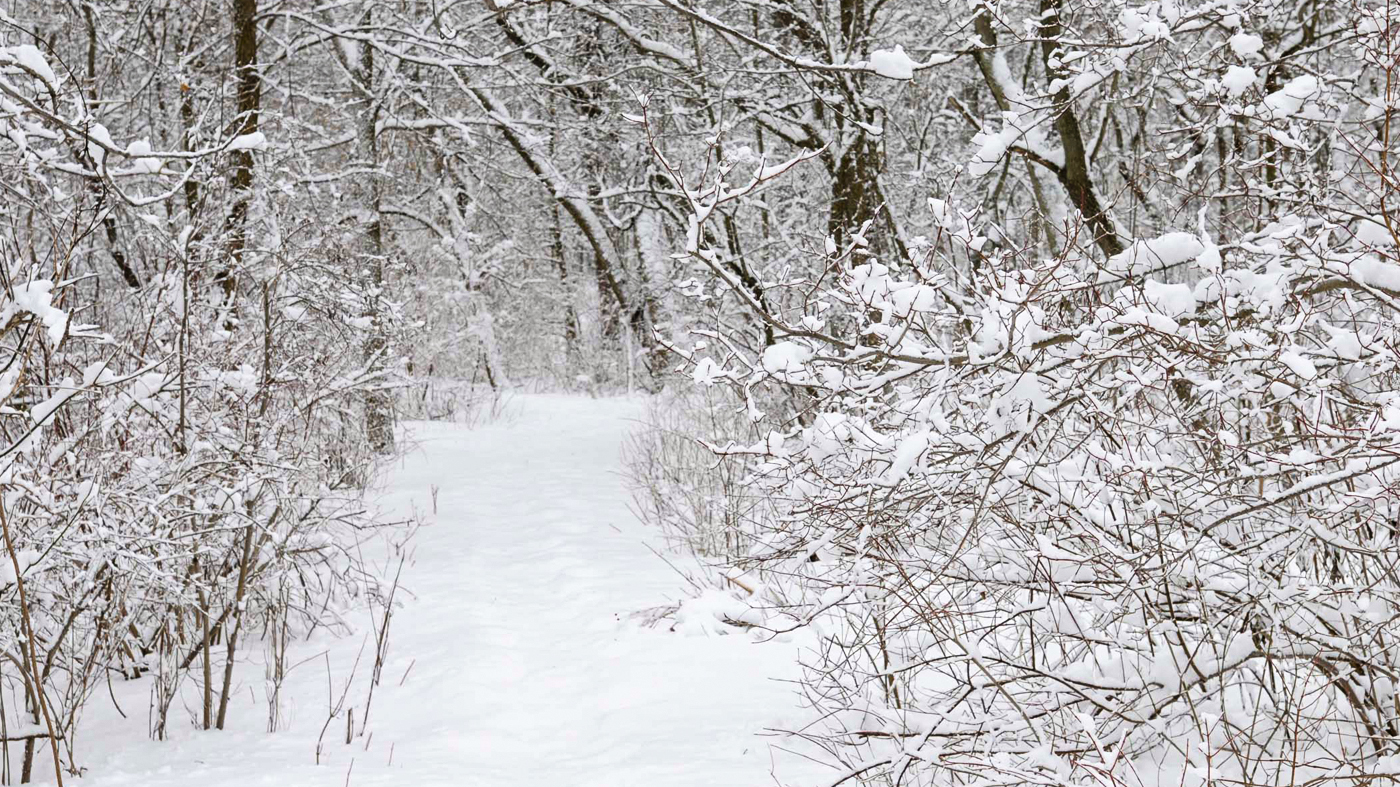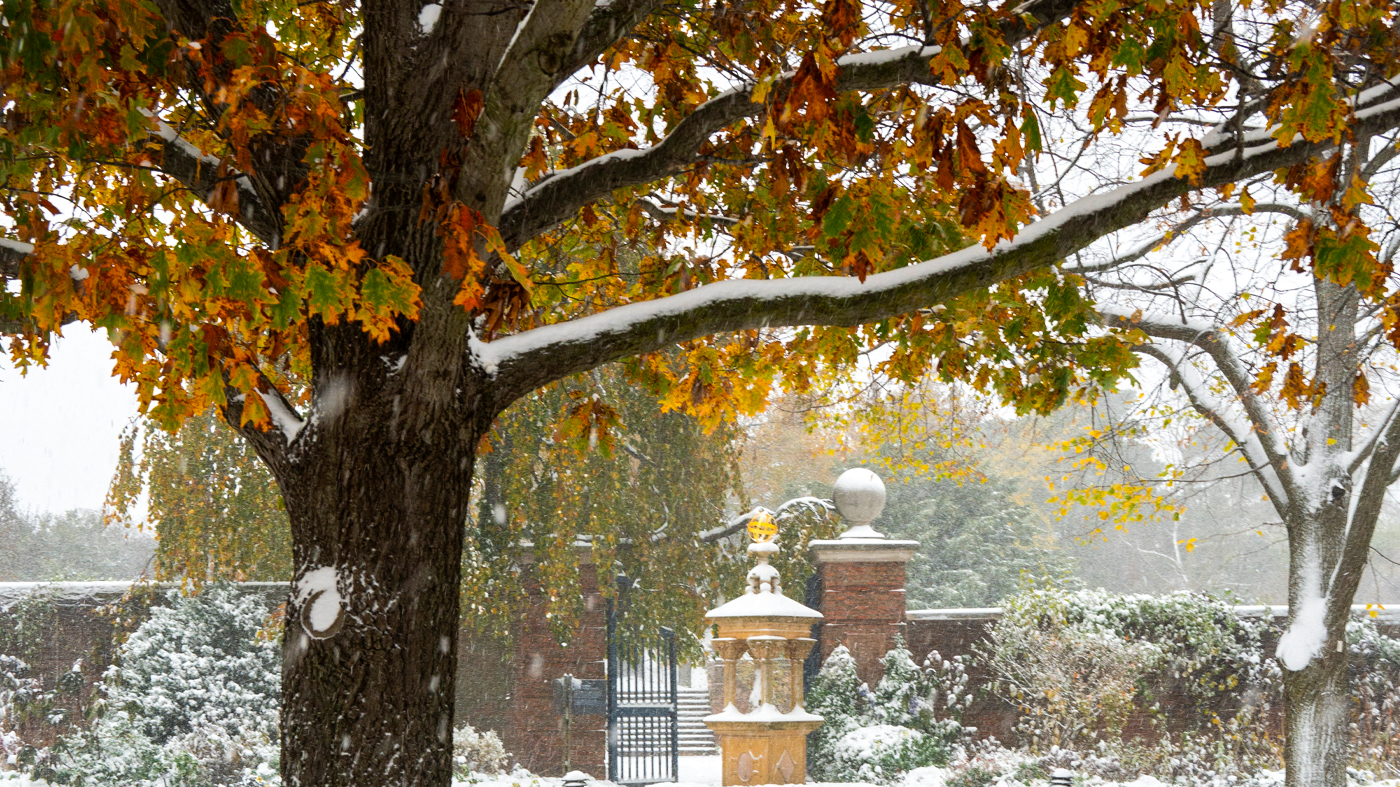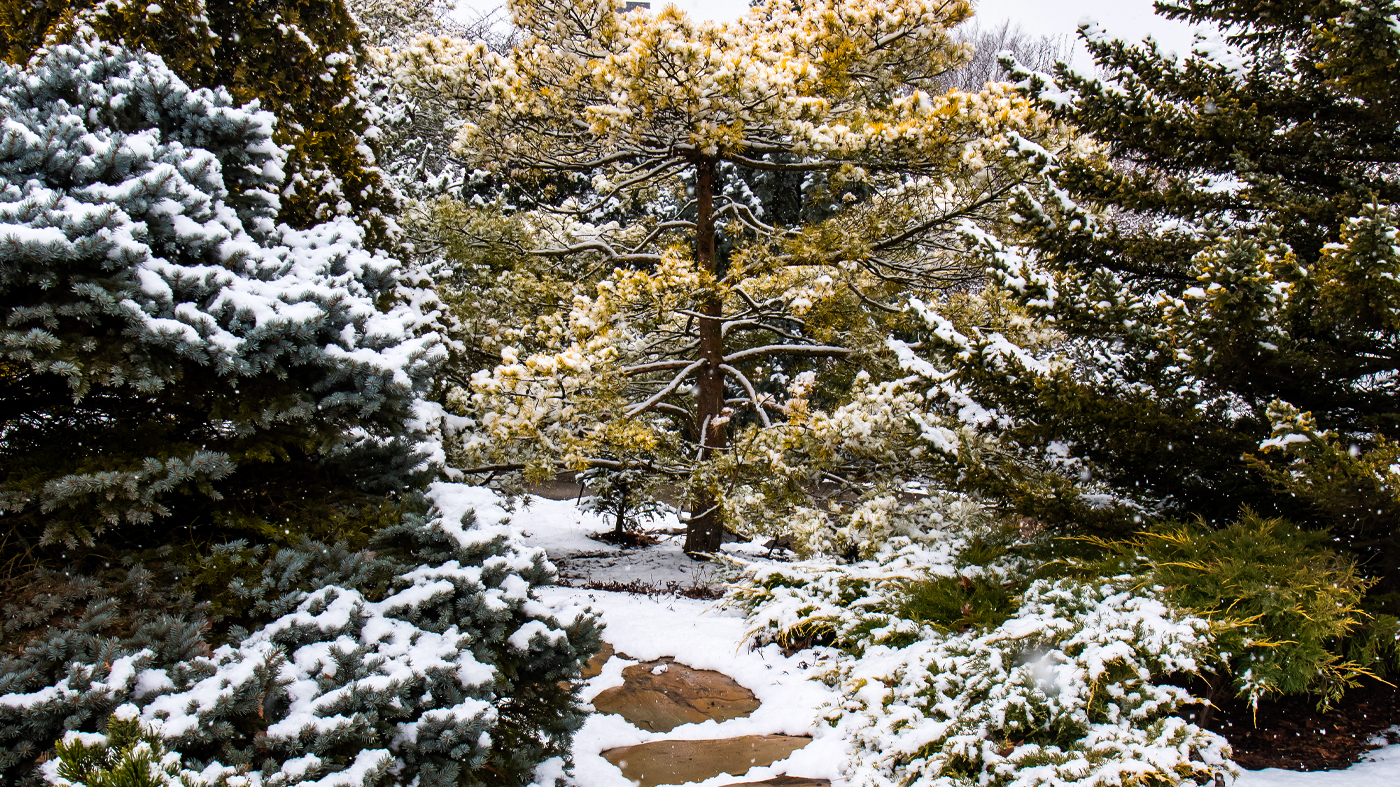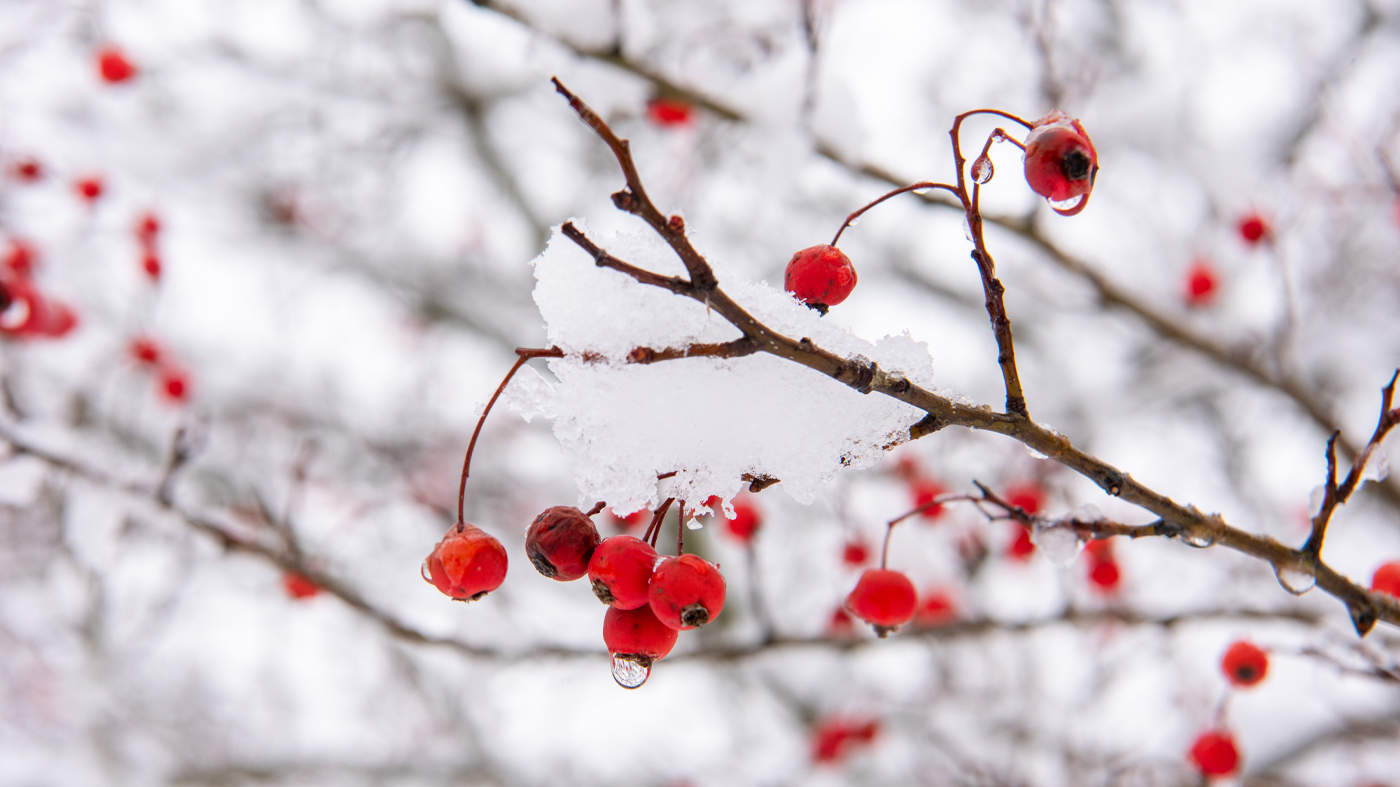

Thinking About Trees in Winter
The magnolia, redbud, katsura, birch, maple, and ginkgo have all disrobed—shedding their beautiful fall canopies as they settle into the quiet season. On bright days, they cast long shadows across the ground as the sun sits low in the sky. At sunset, their elegant silhouettes are often backlit by fiery skies. And when the snow arrives, it cloaks their outstretched limbs in a layer of white that gleams on even the darkest nights.
Unlike during summer, when there are so many things to distract me in the garden—dragonflies, bluejays, coneflowers, bumblebees, and weeds—winter is a time to redirect my observations and reflect on nature, especially trees. And, when the snow settles, even better.
There are the champions, the oaks—red, white, swamp, shingle, pin, and bur—and when I come across an old one growing in an oak grove or alongside a 19th century farmhouse, I marvel at the wingspan of its big, burly branches. Those limbs have hosted countless birds, squirrels, insects, and more over the decades. A few holes in the trunk have served as nesting sites for generations of woodpeckers, chickadees, and other birds.
Oaks are long-lived native trees with stately stature. The Garden's collection contains more than 60 oak varieties (20 species are native to Illinois) and more than 1,000 individual oaks. One feature that stands out in winter is an oak tree’s corky bark, which serves to insulate the tree from freezing temperatures and fire.
Then there’s another group—the conifers—cone-bearing plants, with their green, blue, silver, or gold-green needles. Drooping, weeping, upright, dwarf, narrow, or pyramidal—their shapes, textures, colors, and forms add splendor to the winter landscape. But they offer something more: protection from inclement weather for birds and a hideaway for when they seek to evade predators. A stroll through the Dwarf Conifer Garden is an enchanting experience in winter. Small, sturdy, and colorful, many of the plants there offer a hint of fragrance on a cold, sunny day.
Trees are often easier to identify in summer than winter. After all, you can see the shape and color of their leaves and how they are arranged. It’s a bit more challenging in winter, but just as interesting. Some clues include the bark. Shagbark hickory has long peeling strips of bark. American hornbeam, also called muscle wood, displays bark that is incredibly smooth with a few ripples. And there’s the arrangement of twigs—either opposite, like that of the maples, or alternate.
Berries hang on crabapples. Yellow, spidery blossoms adorn witch hazels. The sleek buds remain on beech trees. You need not be an arborist to appreciate all the little details that trees unveil during the winter. Are there dangling fruits? What do the buds look like? Is the tree holding onto its leaves? Is the bark smooth, bumpy, corky, or peeling? A field guide to trees in winter is a lovely companion, but the Garden’s plant tags offer help if you visit without one.
There are many ways to appreciate winter outdoors. Take a walk to the Elizabeth Hubert Malott Japanese Garden, where the pines are symbols of long life that create living sculpture. Or visit the 100-acre McDonald Woods, filled with oaks and a forest floor laden with acorns. The Garden in Winter is a very special place indeed.
Read On
Take a break from your winter stroll at the Garden and pop into the Lenhardt Library. Check out The Sibley Guide to Trees, Trees of North America, or How to Read a Tree: Clues and Patterns from Bark to Leaves by Tristan Gooley. Garden members can borrow books online. All you need is your unique membership number for full access to the e-book system.
Check out upcoming classes and events.
Nina Koziol is a garden writer and horticulturist who lives and gardens in Palos Park, Illinois






